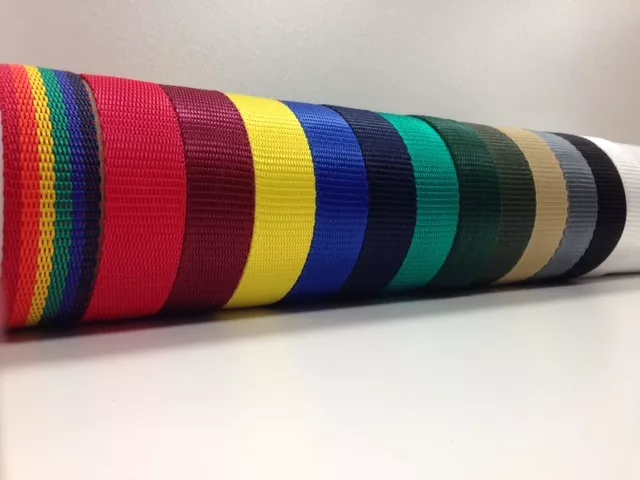The Importance of Caring for Webbing Straps to Ensure Durability and Ease of Use
Contents
Webbing straps are materials commonly used in various applications, including bags, harnesses, and outdoor gear. However, to maintain the durability of webbing, proper care is crucial. One essential aspect of this care is keeping the webbing clean.
The importance of maintaining webbing cleanliness lies in extending the lifespan of the straps, protecting them from germs and bacteria, and keeping them looking good. Below is a detailed guide on how to keep your webbing clean and well-maintained.
Why Keeping Webbing Clean is Important
Maintaining the cleanliness of webbing is essential, especially if the straps are used for outdoor activities. Dirty webbing can lead to the spread of germs and bacteria, reduce resistance to weather and elements, and diminish the aesthetic value of your outdoor gear.
If webbing is not properly cared for, its lifespan can be shortened, leading to the need for replacements. Therefore, ensuring your webbing is clean is vital for optimal performance.
How to Easily Clean Webbing
Clean webbing helps prolong its lifespan and keep it looking attractive. Here are some easy tips for cleaning your webbing:
Use the Right Cleaning Supplies:
Use mild soap and warm water to clean the webbing naturally. Special cleaning products, such as shoe lace cleaners or enzyme-based cleaners, can also be used.
Clean Gently:
Use a soft brush or cloth to clean the webbing in dirty or hard-to-reach areas. Avoid using rough brushes or cutting tools that could damage the webbing.
Rinse and Dry:
After cleaning, rinse the webbing with clean water and air dry it. Avoid using a dryer, as the heat can damage the webbing.
Effective Webbing Care Tips
To keep your webbing in top condition, here are some effective care tips:
- Ensure the Webbing is Dry Before Storing: Storing wet or damp webbing can lead to mould or bacteria growth, damaging the material.
- Regular Inspections: Inspect your webbing at least every six months, or more often if used frequently. Look for any damage or wear, and replace it if necessary.
- Proper Storage: Store your webbing in a dry place, away from direct sunlight. Use a bag to keep it free from dust and dirt.
- Avoid Frequent Washing: Washing webbing too often can wear out the material. Only wash it when necessary or after heavy use.
Practical Webbing Maintenance Tips
Maintaining webbing can be simple and time-efficient. Here are some practical tips to keep your webbing clean and durable:
- Avoid Using a Washing Machine: Washing machines can damage webbing and make it dull or even cause it to break. Instead, hand wash with a soft brush and mild soap.
- Avoid Bleach or Strong Stain Removers: These can weaken the webbing fibres and make them brittle. Use gentle, synthetic-safe cleaning products.
- Store Properly: After washing, ensure the webbing is thoroughly dried before storage. Fold it neatly and store it in a dry, shaded place.
- Avoid Storing in Humid Places: Humidity can cause webbing to deteriorate over time.
- Regularly Inspect for Damage: Check for tears or rips and replace damaged webbing immediately to prevent further damage.
- Use Webbing Appropriately: Avoid overloading webbing with excessive weight, as misuse can lead to rapid deterioration.
Restoring Faded or Dirty Webbing
After several uses, webbing may become dull or dirty due to dust, dirt, or sun exposure. But don’t worry, you can refresh it with these simple methods:
- Re-dye Faded Webbing: If your webbing has become dull, consider re-dyeing it with fabric dye. Clean and dry the webbing first, then follow the dye instructions for best results.
- Machine Washing Webbing: If the webbing is still dirty after hand washing, try machine washing. Place the webbing in a mesh laundry bag, use mild soap, and select a gentle wash cycle. Afterward, dry it as previously mentioned.
- Removing Stubborn Stains: For tough stains, use a mixture of water and baking soda. Apply it to the stained area using a soft toothbrush, scrub gently, then rinse with clean water and dry as usual.
Preventing Unpleasant Odours in Webbing
Keeping webbing clean is not just about appearance; it also prevents unpleasant odours caused by sweat, dust, or dirt that has accumulated and not been cleaned properly.
Avoid Letting Webbing Stay Wet: Wet webbing can develop odours and compromise the material’s integrity. Always dry the webbing thoroughly before reusing it.
Regular Cleaning: Regular cleaning can help prevent bad odours and keep the webbing looking good. Be sure to follow the manufacturer’s care instructions, as some webbing is only safe to wash with cold water or mild soap. Avoid using bleach or harsh chemicals that can damage the material or fade its colour.
Use Deodorant for Webbing: Special deodorants are available for webbing, allowing you to choose one that suits your preference. Follow the instructions before applying it to the webbing.
Choosing Easy-to-Clean Webbing
If you frequently use webbing, selecting one that is easy to clean is important. Here are some tips for choosing easy-to-clean webbing:
Choose Easy-to-Clean Materials: Polyester or nylon are good choices because they don’t easily absorb dirt.
Select Webbing with Protective Coating: Some webbing is coated with a durable material, making it easy to clean and long-lasting.
Pick the Right Colour: Light colours like white or yellow get dirty quickly and are harder to clean. Darker colours like black or grey are better as they stay looking clean longer.
For more information and product consultations, do not hesitate to contact us at PT. Kompindo Fontana Raya via email at info@fontana.co.id or phone at 021 5451040 / 0811 1200 1367.

